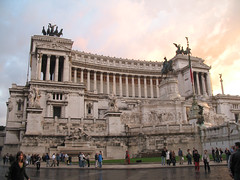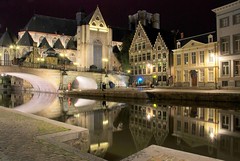 The cheapest way to travel to Europe is going to depend on where you are to begin with. If you are in the United States, then the cheapest way to travel is to fly. There are many ways you can save on airfares to Europe by following a few simple tips.
The cheapest way to travel to Europe is going to depend on where you are to begin with. If you are in the United States, then the cheapest way to travel is to fly. There are many ways you can save on airfares to Europe by following a few simple tips.
- Use sites like Kayak.com. Sites like Kayak.com offer a feature that searches multiple airlines, multiple dates and multiple flights at once to find the best rate on the Internet. These sites can save you a lot of money if you don’t have a specific date in mind, but rather a general idea of when you want to travel. You can watch the site over a period of weeks and snag a flight when it is the most affordable.
- Contact a travel agent. Let them know you are looking for the cheapest way to jump the puddle to Europe and they can keep an eye out in their pooled airfares for you. They are experts in travel and know how and where to look for good deals.
- See what airlines are competing for your business. Some airlines undercut certain travel routes to Europe. Keep an eye out for what is going on in the airline industry for a clue about when the right time is to purchase a ticket.
- Buy as soon as you establish a departure date. If you buy early on you can sometimes save a bundle, but this can be a gamble, if flight prices drop. You’ll miss out on better deals. Sometimes paying a little more to make sure you have a seat when you want it is the cheapest way to go.
- Travel in Europe’s off-season. If you wait to travel between September and May your flight price can drop by as much as half. The other advantages will be that you save on accommodations, there are not nearly as many tourists as there are during high-season, you get to have a more relaxed vacation and some of the attractions that charge fees, lower these as well. So, if you decide to go during the slow season, then you will get the cheapest price on most of your trip expenses including the flights.
No matter when you travel to Europe or how much you are willing to spend to get there, you mustn’t forget to get a cheap travel insurance policy before you go. An inexpensive travel medical insurance policy will save you a ton of headaches and money should you have an accident or get injured during your travels. If you are looking for the cheapest way to get to Europe, then you probably don’t want to pay out of pocket and up front for emergency, hospital and doctor’s care or for a medical evacuation flight back home if you should need it. Travel insurance will be the least of your worries and expenses.







